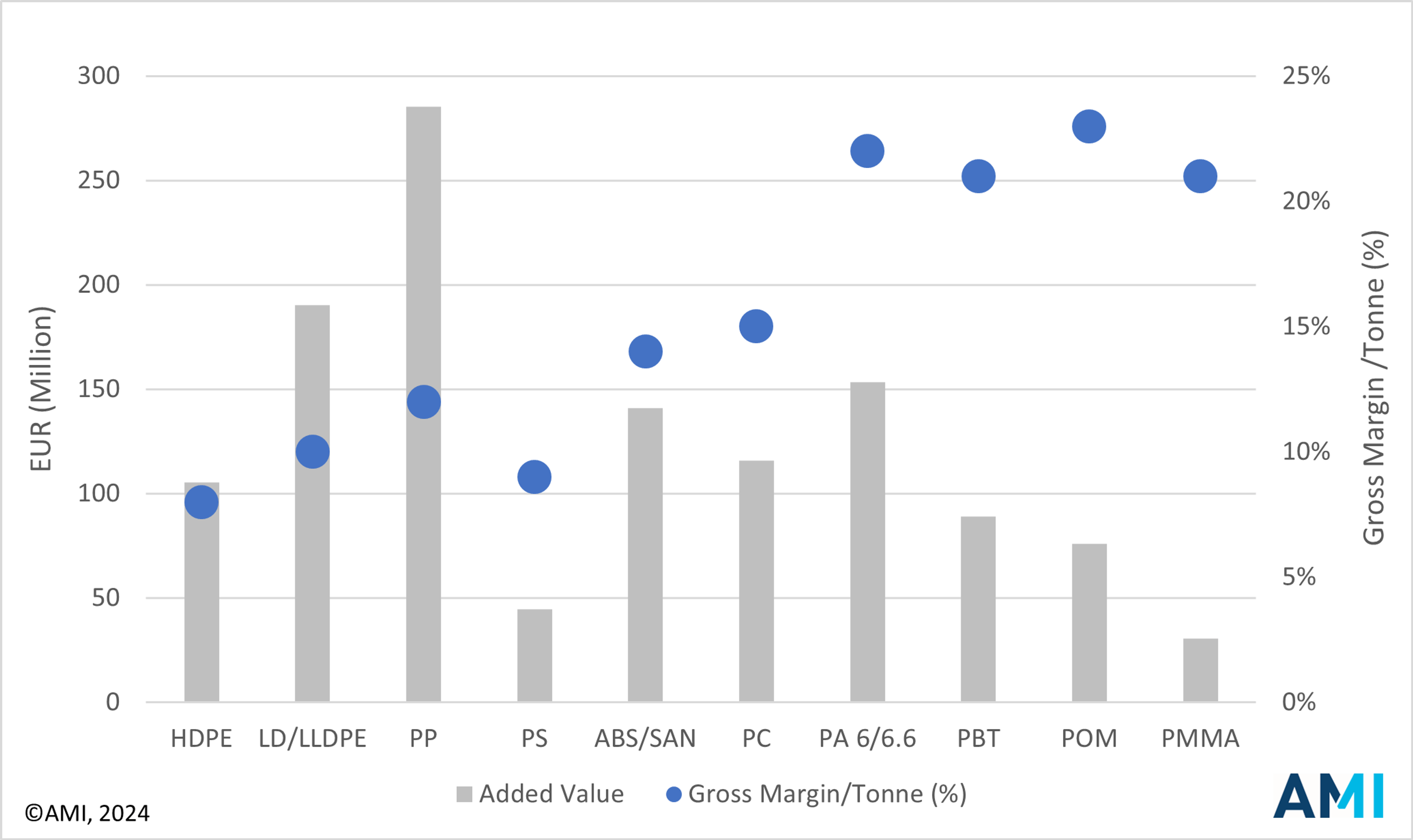
Polymer Distribution Europe
We are excited to announce the publication of the ninth edition of our authoritative report on the European Polymer Distribution industry. Released in October 2024, this comprehensive research provides investors and industry stakeholders with an in-depth understanding of competitive challenges, market dynamics, and the scale of industry development.
Our report stems from an extensive research program, delivering a comprehensive, independent evaluation of the polymer distribution industry during periods of significant uncertainty.
For over 20 years, we have been monitoring and analysing industry trends. Across the past eight editions, our study has evolved into the most comprehensive analysis of polymer distribution available on the market.
This in-depth report will help you optimise your business activities and strategically plan your future investments.
Who Can Benefit from This Report?

Distributors
Obtain an assessment of the key suppliers, who are growing, who is important and the implications for sourcing materials in the future.

Traders
Acquire an assessment of market opportunities, key suppliers, and industry trends for strategy development and for sourcing materials in the future.

Processors
Access an invaluable tool to understand the actual size of the market for each polymer and country, the position of competitors within the supply chain and the trends driving the market.

Logistic companies
Gather detailed information and profiling of key polymer producers and distributors as well as understand industry dynamics to inform future business strategies.

Investors & business analysts
Obtain a comprehensive overview of industry players, challenges and opportunities to keep up-to-date with the polymer distribution industry trends and acquire solid information to make future investment decisions.
Report scope
Polymers
- LDPE/LLDPE
- HDPE
- PP
- PS
- ABS/SAN and its blends
- PC and its blends
- PA 6/6.6
- PBT
- POM
- PMMA
Note: PET is not included as consumers are typically very large companies using more than 1,000 tonnes/year. The European producers serve these processors directly. PVC is also excluded as it is not a typical distribution product.
In addition, the report provides an overview of the current role of the distribution channel within the sustainable solutions segment.
Geographical scope
- France
- Germany
- Italy
- United Kingdom
- Spain
- Poland
- Benelux (Belgium, Netherlands, Luxembourg)
- Nordic Region (Finland, Denmark, Norway, Sweden)
- Other Western Europe: Austria, Switzerland, Greece, Republic of Ireland, Portugal. Data provided for each country
- Other Central and Eastern Europe: Czech Republic, Slovakia, Hungary, Romania, Bulgaria, Estonia, Latvia, Lithuania, Slovenia, Croatia (and Serbia). Data provided for each country
Data points
The study quantifies the market for 2018, 2023, 2024 and provides forecasts for 2028.
Related products: You may also find these of interest

Dataset: Polymer Demand - New European data
Our Polymer Demand Dataset for Europe is crucial in helping you to navigate market changes, the impact of PPWR on recyclate penetration, and the implications of it on virgin polymer demand.

Database: Plastics Processors Worldwide
Explore our extensive database of over 22,500 plastics processors and compounders from around the globe. Gain access to detailed information on processes, materials, machinery, markets served, and key contacts of plastics processors.
Enquire now
To receive the report proposal, sample pages and more information, contact us today.

Related events
Related news
Press release 
Press release 





